Breaking down the pull-up for climbers
Have you ever wondered about the intricate workings of your muscles during pull-ups and other exercises? Perhaps you’ve noticed that moving in one direction of a particular exercise feels easier compared to moving in the opposite direction. These differences in perceived effort can, in part, be attributed to the three types of muscle contractions: concentric, eccentric, and isometric. Understanding these contractions sheds light on why certain movements pose more challenges than others. Let’s take a closer look at the pull-up exercise and the specific muscle contractions involved to prevent shoulder pain.
To perform a pull-up, start by placing your hands in an open grip around an overhead bar with your elbows fully extended underneath it. Then, pull your body up until your chin is above the bar. Finally, lower yourself back down to the starting position. Several muscles come into play during a pull-up, but the main groups involved are the latissimus dorsi, trapezius, and biceps brachii. The latissimus dorsi plays a significant role in the pulling motion, the trapezius assists with scapular elevation and shoulder stabilization, and the biceps brachii aids in elbow flexion. We often observe this pulling motion in climbing, particularly when pulling towards a challenging hold.
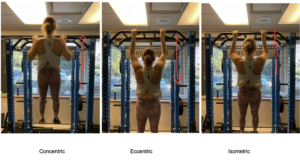
Breaking Down Concentric, Eccentric, and Isometric Muscle Contractions
1. Concentric:
During a concentric contraction, tension builds up in the muscle as its fibers shorten. This generated tension, if sufficient, enables you to move objects or your own body against the force of gravity. In the context of a pull-up, the concentric phase occurs when you lift your chin above the bar. Let’s use the Latissimus Dorsi (lats) as an example. The lats originate in the thoracic and lumbar vertebral region, and inserting on the humerus. As you pull yourself up, the insertion point on the humerus moves closer to the origin on the thoracic/lumbar vertebrae, causing the muscle to shorten.
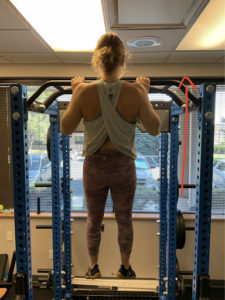
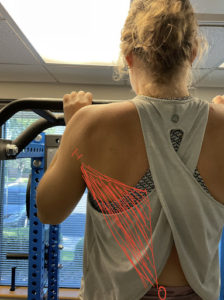
2. Eccentric:
During an eccentric contraction, tension is generated in the muscle as its fibers lengthen. This type of contraction occurs when an object or your body is being lowered, resisting the force of gravity. In the case of a pull-up, the eccentric phase occurs when you are gradually lowering your chin beneath the bar. As you lower yourself back to the starting point of a pull up, the insertion point of the lats on the humerus moves away from its origin, causing the muscle to lengthen. Interestingly, a significant portion of the force generated during eccentric contractions is attributed to the passive tension within the muscle fibers. A protein called titin, present at the end of each muscle fiber, is activated during eccentric muscle contractions, making the muscle fiber stronger and up to 50% more efficient. This heightened efficiency of tension explains, in part, why we perceive the eccentric portion of the pull-up to be relatively easier compared to the concentric phase. An eccentric contraction is also beneficial for rehabilitative purposes in that it enhances the mechanical properties of a tendon resulting in a stronger tendon.
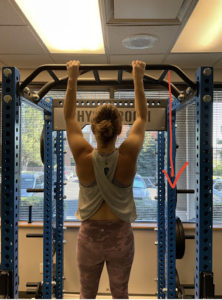
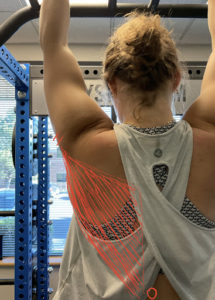
3. Isometric:
During an isometric contraction, tension is generated in the muscle without any movement occurring in its fibers. In this type of contraction, an object or your body remains stationary in space, and there is no active shortening or lengthening of the muscle. In the context of a pull-up, if you were to select a specific point within the range of motion and hold yourself in that position without any further movement, an isometric muscle contraction is taking place. During this isometric contraction, the origin and insertion points of the lats neither move closer nor further apart.
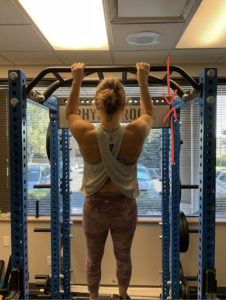
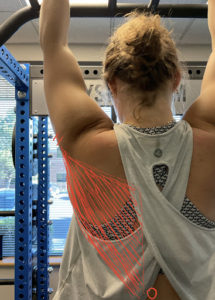
We observe all three types of muscle contractions in climbing:
Concentrically when pulling through on a hard boulder move, eccentrically during a controlled lower to a good resting stance/position or controlled offloading of an engaged position into a more relaxed one, and isometrically to lock off one arm while the other is clipping a bolt. It is important to incorporate all three types into your training or gym routine to develop well-rounded strength and optimize your climbing performance
Schedule an appointment to come in today and learn how to utilize all of these muscle contractions to strengthen the pulling muscles and incorporate it into your rehabilitation and climbing training.

If you would like to reach out to Dr. Juliana Merighi:
Email: juliana@physioroomco.com
Instagram: @julimeri22
Attend her yoga class at Movement.


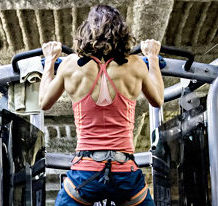
No responses yet